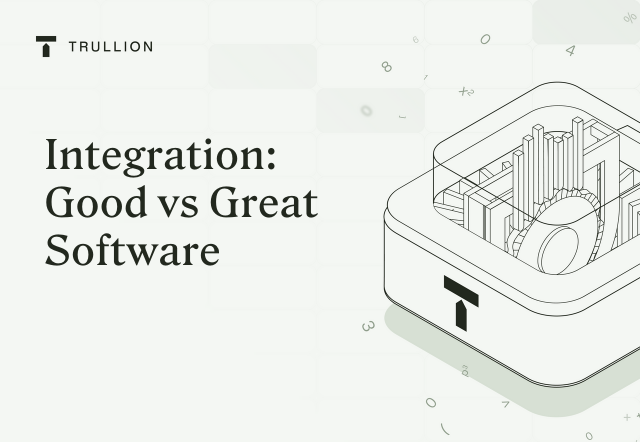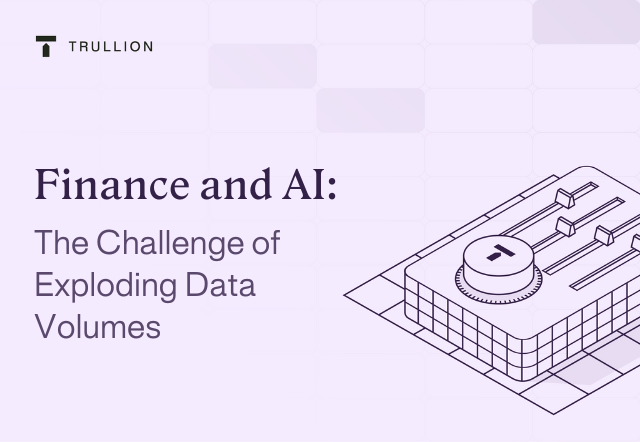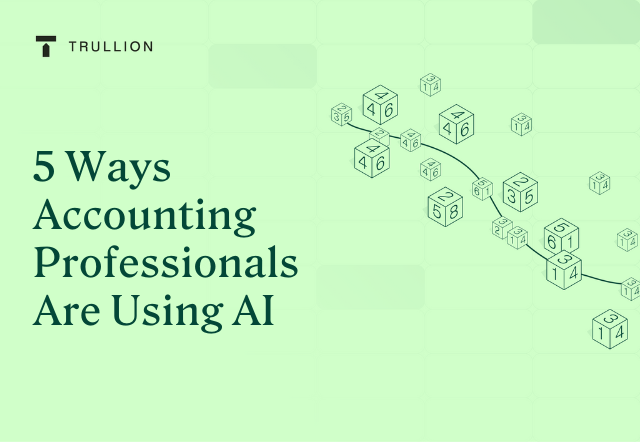Accounting software has come a long way since the early days of clunky products and massive integration projects. Today, AI and automation, coupled with the ease of SaaS platforms, have made today’s generation of software easier to integrate and more powerful in terms of driving business results.
There are, however, massive gaps between great software and software vendors – and everything else.
A great vendor provides software that boosts productivity and efficiency, with low friction and high interoperability with your existing workflow processes. Perhaps most importantly, they bring an emphasis on an ongoing relationship, committing to work together to ensure the integration is a continual success.
We’ll explore what to look out for when considering a new integration or software solution, along with tips, best practices, case studies and more.
The change management conundrum
Switching to a new system, particularly one as integral as accounting software, can be a daunting task for any organization. Employees are accustomed to existing workflows, and change can breed resistance and discomfort.
Common pitfalls that often trip up software integrations include:
- General data integration challenges: including problems with data mapping, format compatibility, and missing data.
- Lack of user training and adoption: often insufficient training and user resistance hinders onboarding and buy-in.
- Performance and scalability issues: software that doesn’t scale or perform well under increased loads can lead to system slowdowns and eventually abandonment.
- Poor support and maintenance: a lack of timely support and maintenance can leave organizations vulnerable to issues and security threats.
- Customization and integration complexity: complex customization and integration efforts can result in delays and cost overruns.
- Inadequate security measures: insufficient security features or non-compliance with security standards can jeopardize sensitive data.
So how do you solve this, and ensure the software you’re about to add to your stack is truly “Great?”
What to look for when integrating new accounting software
The following are key areas to evaluate when considering the implementation of a new software solution:
Compatibility with Existing Systems
Ensure that the software can seamlessly integrate with your current software stack, databases, and infrastructure. For example, can your new lease accounting software solution easily ingest your current leases, without massive amounts of manual work?
Scalability
Choose software that can scale as your organization grows. It should accommodate increased data, users, and functionality without compromising performance.
Security Features
Prioritize software with robust security measures, including data encryption, access controls, and compliance with industry security standards. SOC 2 certification is a must-have.
User-Friendly Interface
Look for accounting software with an intuitive and user-friendly interface. Easy-to-use software increases user adoption and reduces training time. Users of all kinds – from the newest intern to an experienced CFO – appreciate stunning design and a great experience, elements which should not be underestimated.
Vendor Reputation and References
Research the vendor’s reputation, read customer reviews, and seek references from organizations that have successfully integrated the software. A trustworthy vendor with a proven track record is a strong indicator of a successful partnership.
Beware: shiny on the surface, nightmarish in reality
Many software solutions promise the world. In some cases, you can see immediately from their interface and demo that they are just not for you. Some even look great, but hidden below the surface is a huge amount of pain and frustration.
Two cases, both involving failed ERP integrations with big name vendors with even bigger promises, demonstrate these dangers.
In 2018, Revlon delayed its financial reporting and announced that its ERP implementation had been a disaster. Within a day, shares in the company dropped almost 7%. The bad news piled up: the company was sued by its own shareholders, it was served a class action lawsuit, and it admitted it could not fulfill $64m worth of orders as it was unable to record and account for inventory. Multiple companies have experienced similar issues, including Lidl, National Grid, and Haribo.
Waste Management (WM) is another company that bought into an expensive integration, only to have its hopes dashed. A $500m lawsuit claims that “WM was pitched on a well-tested, sector-specific, ready-to-install ERP package. WM learned after the implementation had started that no such software existed. Rather, the ERP system in question was still in development and had ‘never been tested in a productive environment.’”
A key takeaway here is to start with bite-size chunks, rather than implementing a completely new system. Many companies today, for example, are implementing software solutions for specific areas such as lease accounting and revenue recognition.
Enter Trullion
Trullion is an accounting oversight platform that uses AI to simplify revenue recognition, lease accounting, and audit workflows.
Leveraging the ultimate in data infrastructure and AI technology, Trullion takes organizations’ accounting to the next level – with automation, error-proofing, and constant compliance making the accounting experience a breeze; and SOC 2 certification providing assurance that all data is secure.
The Trullion solution is purpose-built to seamlessly integrate with companies of all sizes, specifically enterprises. Client testimonials highlight the value that Trullion puts on a successful integration with new clients:
Vincent Shurr, Global Director of Corporate Accounting and Consolidations at Eisai (the U.S. arm of the Tokyo-listed company, employing over 3,000 people) notes that “The Trullion platform is very intuitive-looking, clean, simple and modern. When considering software, Trullion had what we felt was the right solution for us in terms of the look, the feel, the functionality.”
From an integration perspective, he adds that “Trullion partnered very proactively with us to build out a solution for our needs. They worked with us hand in hand and accepted my feedback…to deliver what we needed. When I had questions, they were there. When I had comments, they were there and we got it done in a very short period of time.”
This feedback is echoed by Ville Räsänen HMD Global (Nokia) Senior Finance Manager. Regarding the look and feel, Räsänen says “Trullion felt like using an Apple Store or kind of native app… One of your customers called it the most beautiful accounting software. So, I could support that.”
The list goes on, but one final example is from Yaron Kaneti, VP Finance at Taboola: “On top of being a great system, the Trullion team’s passion to make it work for us nailed the project…It’s not only the technical solution and how your system works – I think it’s your people”
Maximizing ROI: the ultimate goal
Investing in accounting software should ultimately bolster your bottom line, reduce risk, and enhance productivity. If a software solution fails to achieve these objectives, it can be a drain on resources rather than a value-added investment.
When evaluating potential vendors, assess not only the initial cost but also the long-term value they bring to your organization. A good vendor will understand your ROI expectations and work collaboratively with you to achieve them.
To learn more about how Trullion can make integration seamless, provide long-term value, and immediately maximize ROI, get in touch with the Trullion team today.










